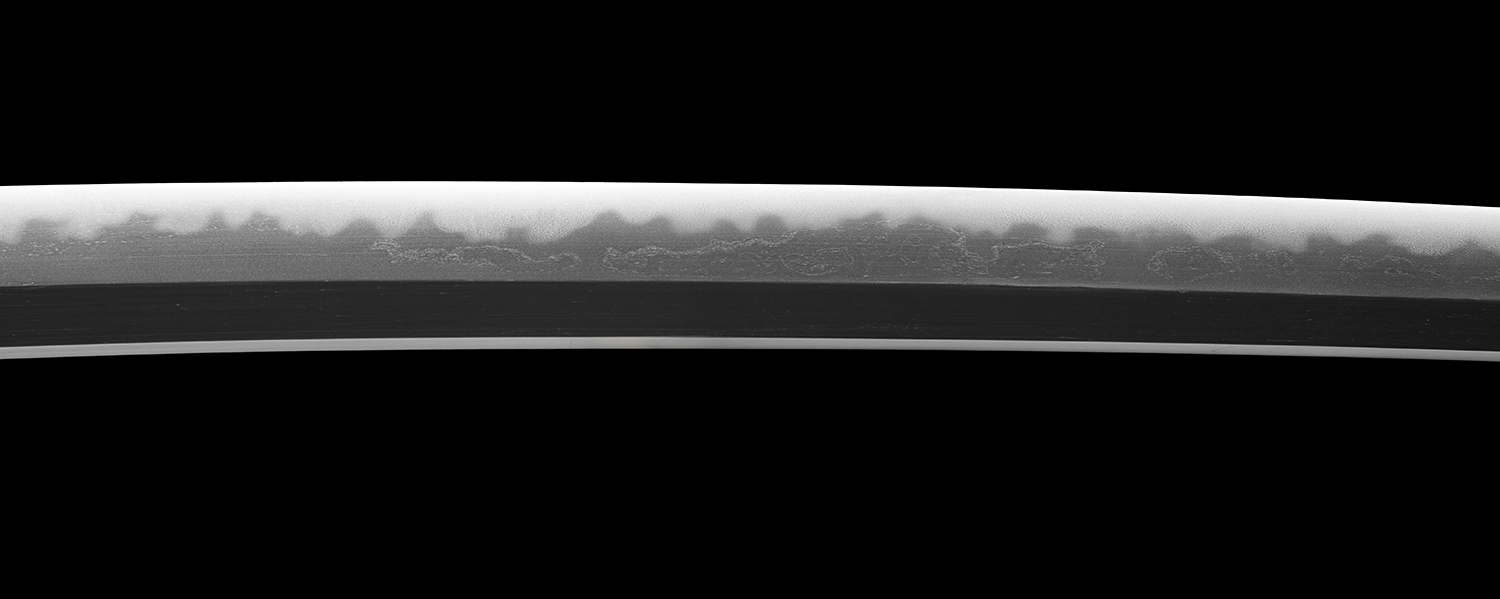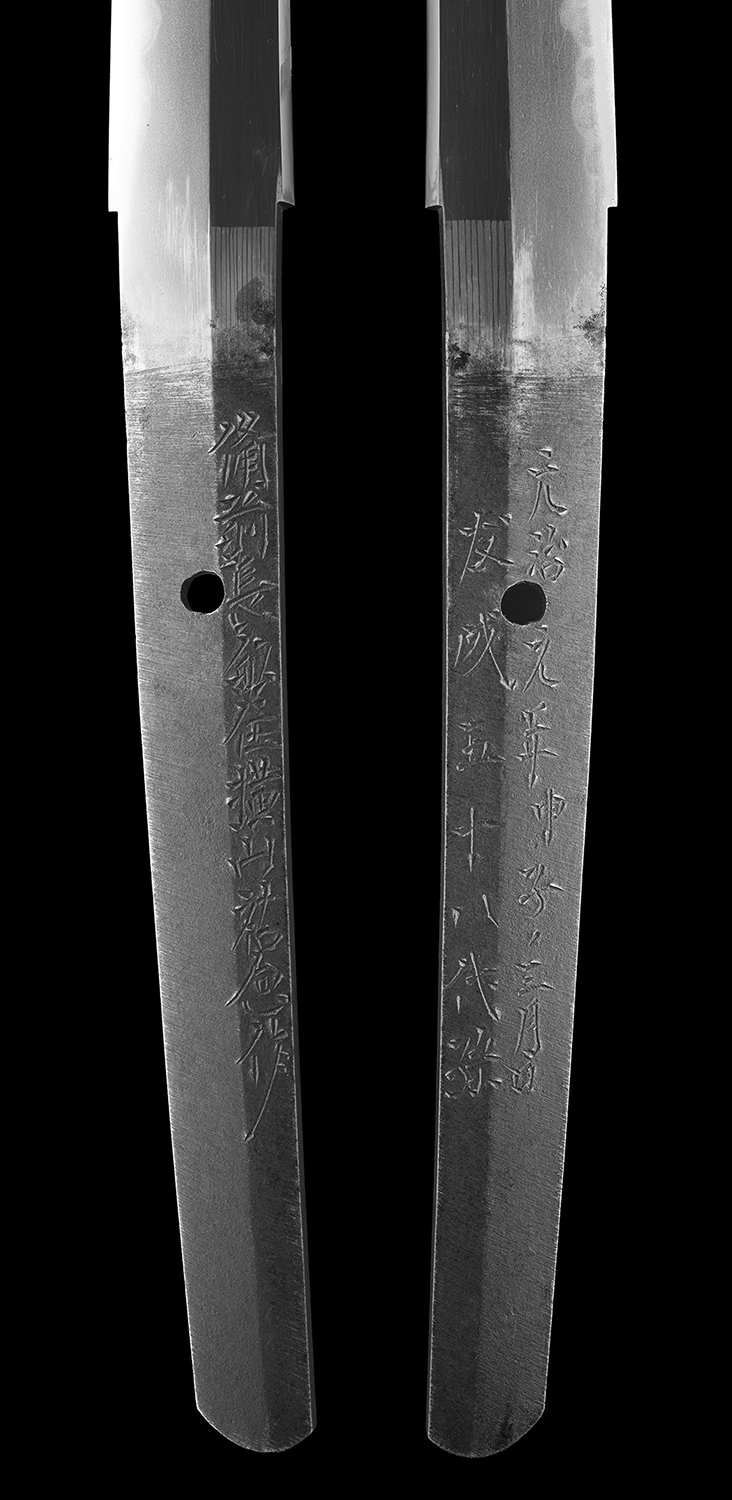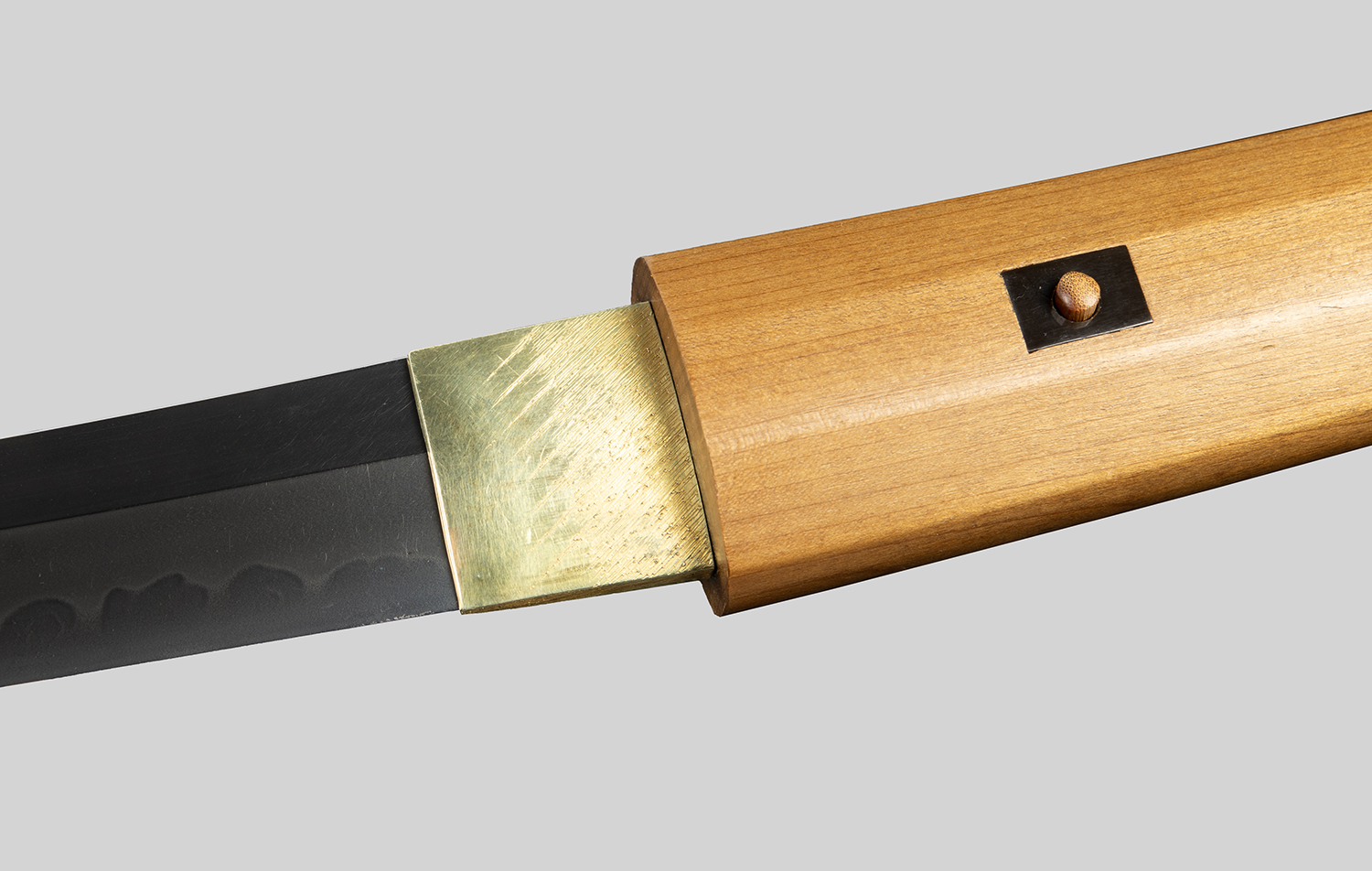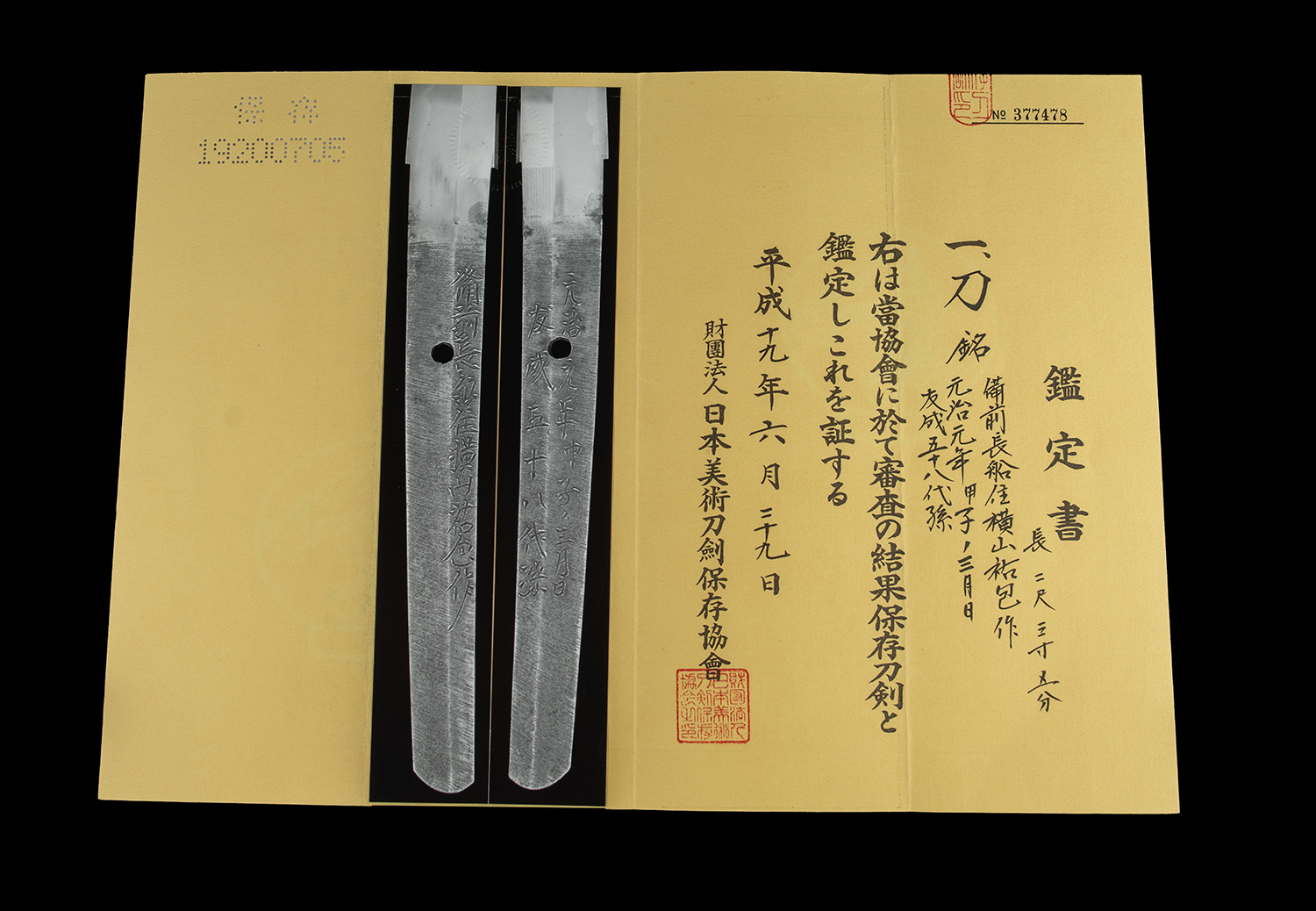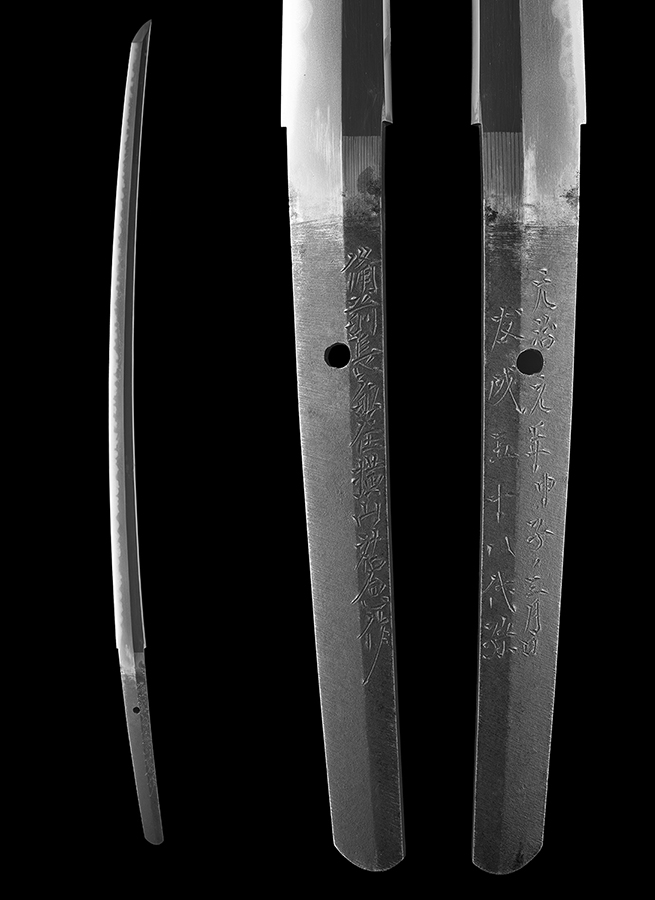|
| |||||||||||||||||||||||||||||||||||||||||||||||
Hamon : Nioi deki choji gunome midare. The nioi guchi is tight and vivid. There are many ashi and yo. The whole hamon is florid and vibrant.
Boshi : Midare-komi. Ko-nie can be seen in the boshi. The kaeri is long and it ends in a rounded tip.
Kitae : Tight ko mokume hada. The jigane patern is clear and is covered in profuse ko-nie and chikei. O-hada is mixed in on the ura ji.
About this sword : This is a fine katana by Bizen Yokoyama Sukekane. The Yokoyama Bizen smiths are renowned for their style of choji gunome. This blade is a textbook example of the Bizen Yokoyama style of choji gunome midare. The hamon is nioi deki. The nioi line is even in both brightness and width throughout the entire length of the blade. This style of nioi deki is tightly controlled and appears as a vivid luminous line. There are no breaks nor thinning and there is no clumping of nie. The boshi is a robust midare komi with a long return and smooth rounded ending. This style of boshi is an important kaneti point for Yokoyama Sukekane. The jigane is tightly folded ko-mokume that is covered in tiny bright evenly distributed ji-nie particles. There is a mixing in of o-hada on the ura side. The shape of the ubu nakago is also textbook Yokoyama Bizen style. Late Edo times were a period of great uncertainty and martial readiness. Blades were made with long nagasa and wide mihaba which reflected the courage and strength of the Samurai. This sword is exactly such an example and is awe inspiring to see in hand.
Sukekane was the adopted son of Yokoyama Sukemori. He had also been known as Yokoyama Toshiyuki, A tradtion of stating lineage from Ko Bizen Tomonari had begun with Yokoyama Sukenaga and this continued for several generations. Sukekane added "Tomonari go ju hachi dai mago" ( 58th generation decendant of Tomonari ) to the mei of his works. The nakago of this katana includes this in the ura mei as well as the date that it was made, March 1864. Sukekane is a well regarded smith as is really seen at a higher level that some older rankings may indicate. His work is typically valued as much or more than Jo Saku shinshinto. In addition to the high quality of his work, another factor adding to his reputation is that his student, Minamoto Kanenori was nominated as Teishitsu Gigei In (Imperial Household Artisan). Kanenori received this honor in 1906 along with Gassan Sadakazu.
This katana is in full polish. It comes with a NBTHK Hozon paper and a storage bag. It is ubu, signed, dated, mainline, long, wide mihaba, healthy and by a well-known smith. This blade is priced quite competitively by the owner.
$8500
SALE $7700






